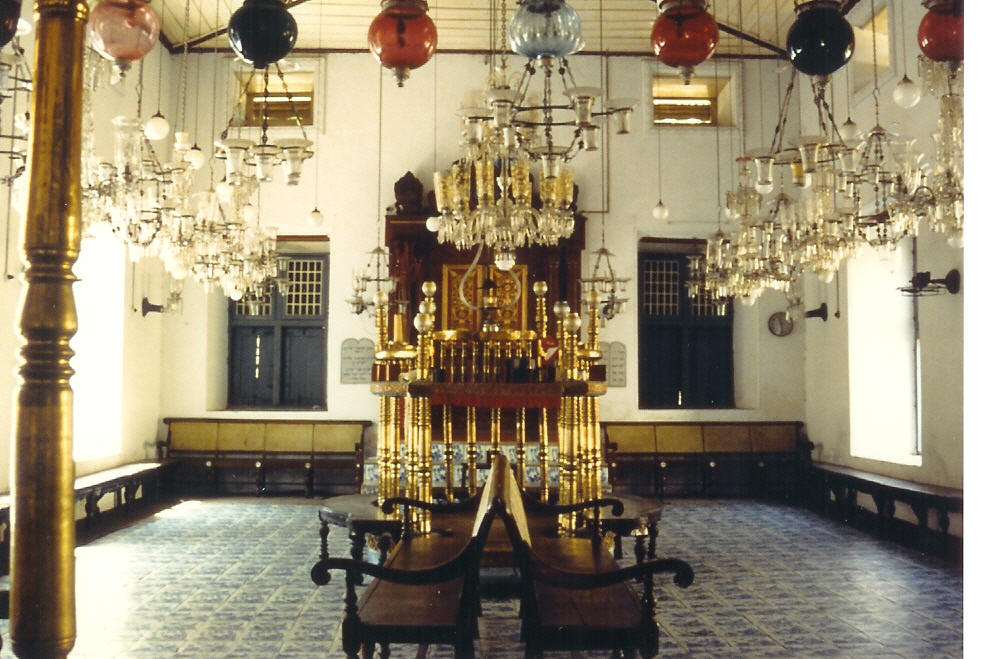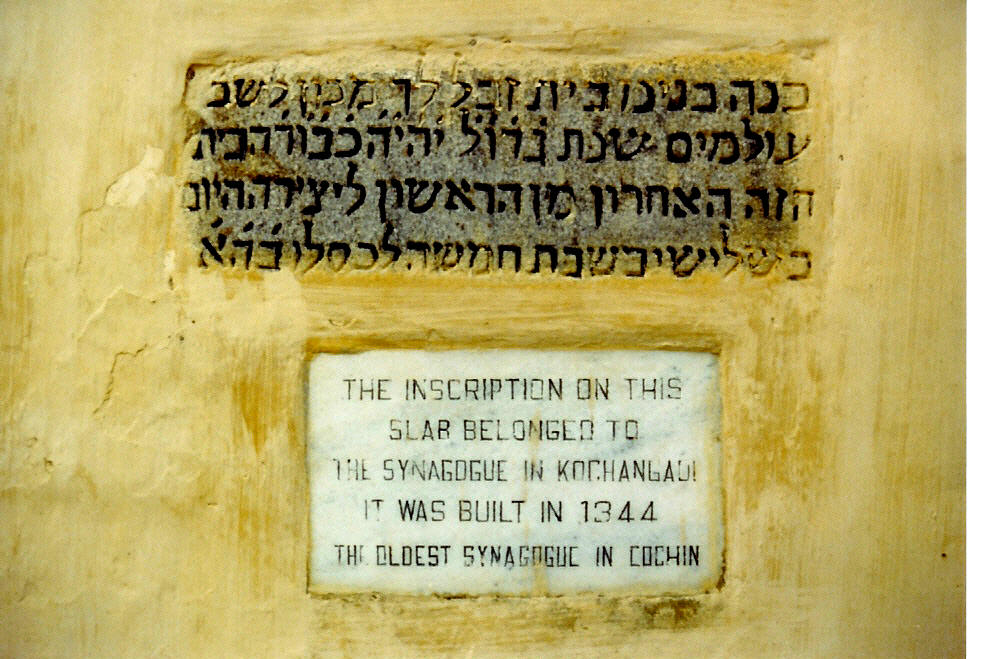Global Exchange Kerala Reality Tour GX Tour Itinerary Page The Pardesi Synagogue at Mattancherry, Cochin, Kerala The Cochin synagogue is one of Kerala's
most beautiful buildings. It has attracted widespread tourist and scholarly interest.
Belgian chandeliers and hand painted floor tiles
from Canton, China no two alike date from the
mid-18th Century.
Oral traditions claim Jewish trading contacts between Kerala and ancient Israel from the time of Solomon (about 950 BC). These are supposedly referred to in the Old Testament Books of Kings and Chronicles. A refugee Jewish presence in Kerala is claimed from the time of King Nebuchadnezar of Babylon in 500 BC. Other traditions claim the first Jews came just after the Roman destruction of the Jerusalem temple in 70 AD. The earliest Jewish presence in Kerala is thought to have come at Kodungallur (Cranganore), a trading town just north of Cochin harbor. This may correspond to the ancient site of "Muziris," a port city said to have traded with the Roman empire. If it exists, this site is now under the harbor and can only be verified through an expensive underwater archaeological project. More Jews may have come to Kerala as refugees from the European Inquisition and they may have been among those who arranged the construction of the Cochin synagogue tourists now see. The Jewish community in Kerala recently has been so small that members have played no significant role in the state's political history. There is no history of indigenous anti-Jewish bigotry in Kerala or in India generally. The spice houses of Cochin and the Jewish presence there play a role in Salman Rushdie's 1995 historically based novel The Moor's Last Sigh (New York: Random House). Read about Abraham and about Moshe Cohen, both of Cochin. Iyer, L. K. Anantha Krishna. 1912. The Tribes and Castes of Cochin. Reprinted in 1981 by Cosmo Publications, New Delhi. Volume 3, pages 400434. [Most of the pages after 402 are based on the author's reading of non-Indian sources on Jewish history and beliefs.]
Koder, S. S. 1974. History of the Jews of Kerala. Cochin:
Chandrelekha Printers. Additional Photos of the Cochin Synagogue GX Tour Itinerary Page Jews in India |

